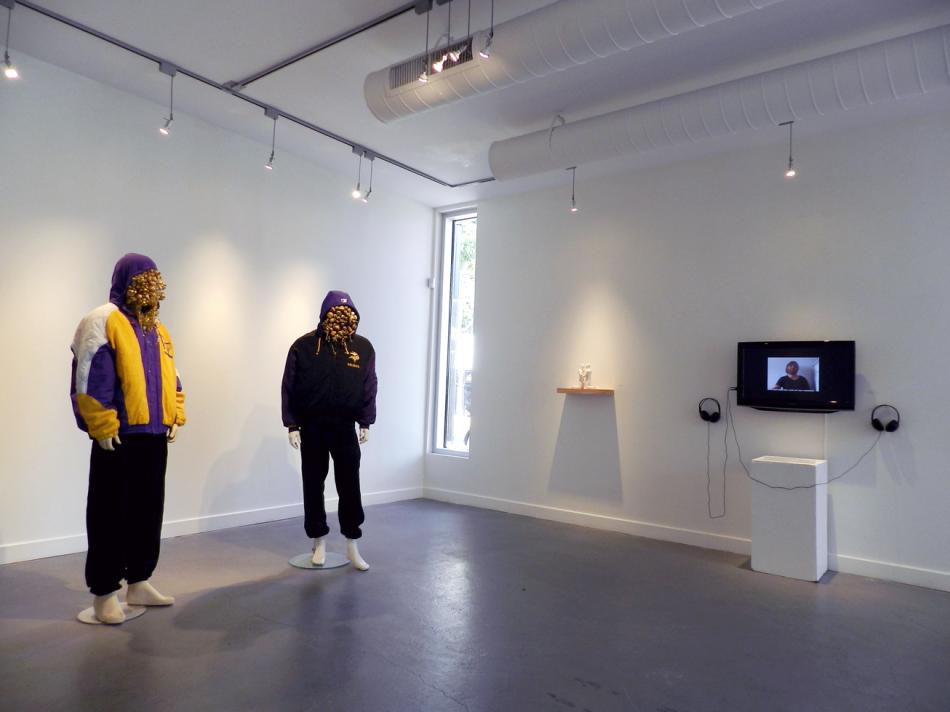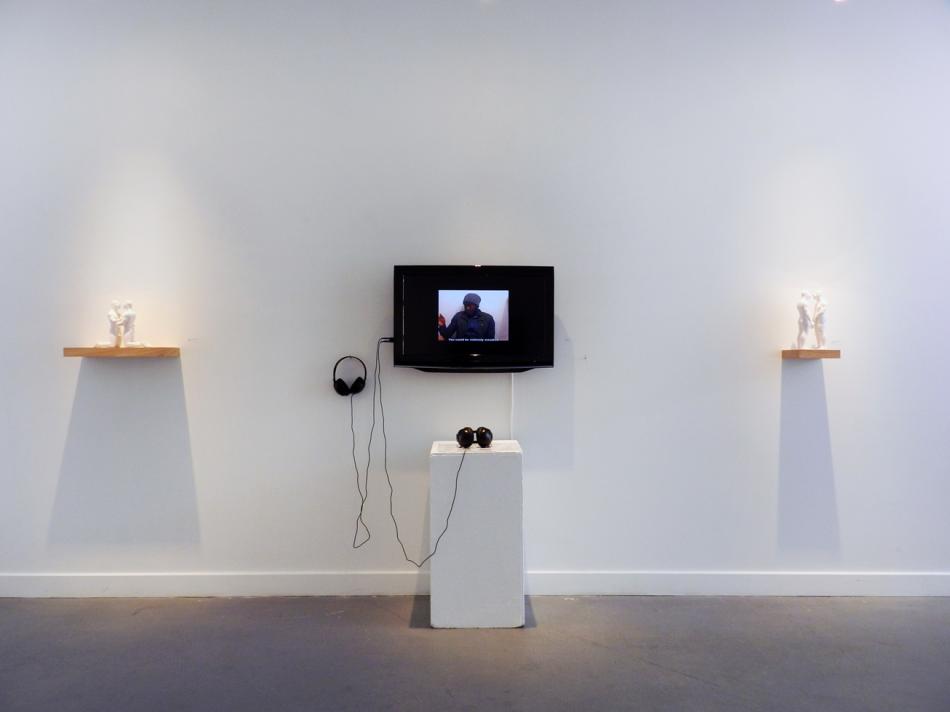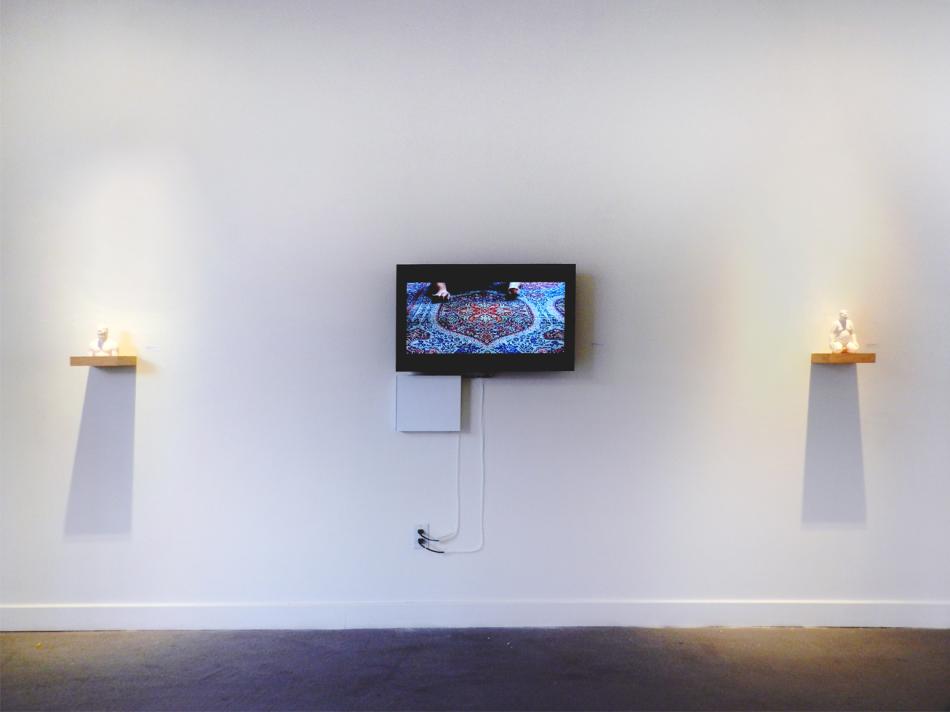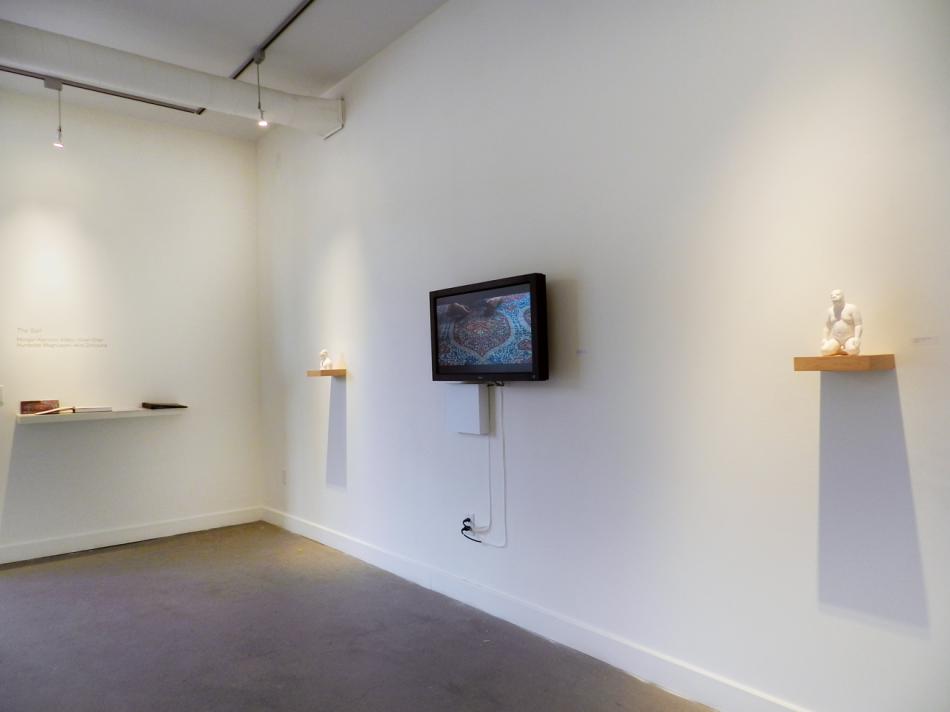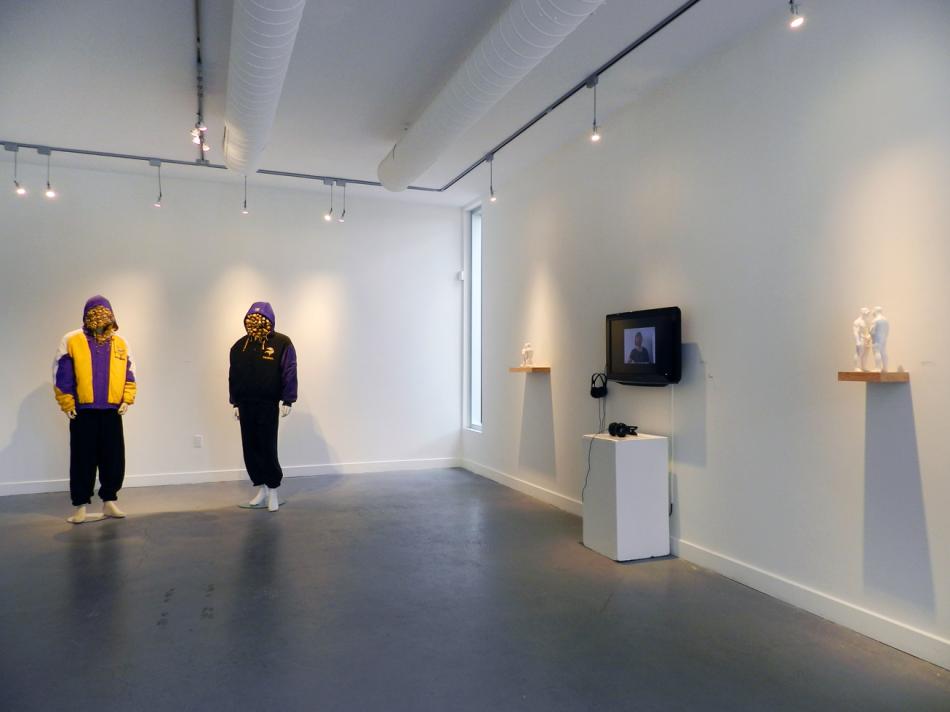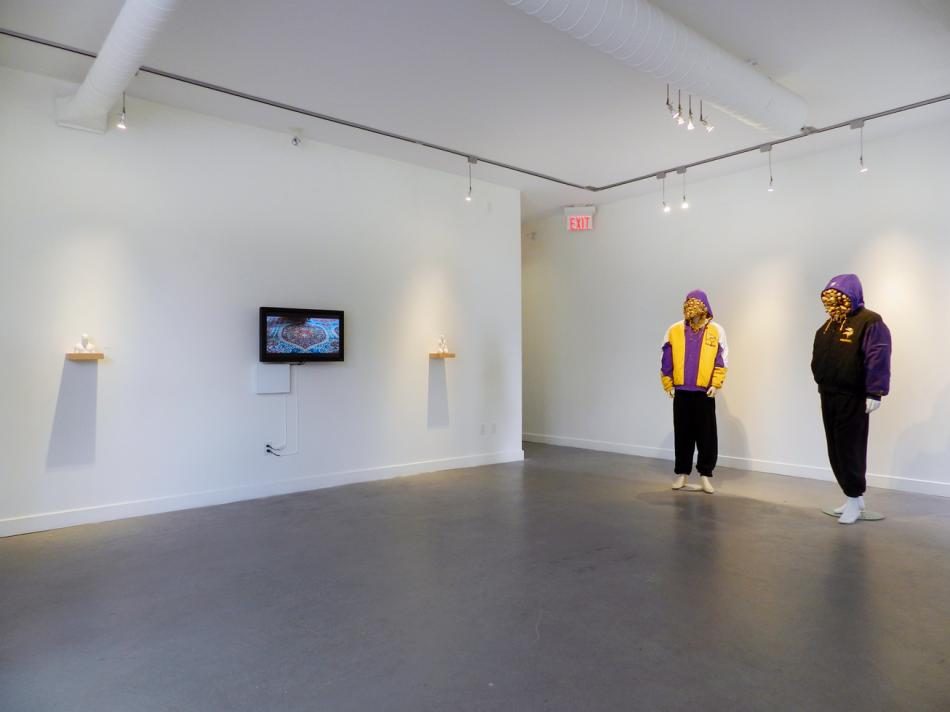The Self
Morgan Kamocki Allaby, Vivian Chan, Humboldt Magnussen and Alize Zorlutuna
-
Opening reception: Saturday, July 11, 2:00-4:00pm
The exhibition The Self explores the ways in which we accept, reject, subvert and reshape fragmented aspects of our individual identities. Alize Zorlutuna, Humboldt Magnussen, Morgan Kamocki Allaby, and Vivian Chan present the malleability of bodies, sexuality, objects, cultures and meanings, thereby challenging their solidity. It is in this exhibition that these works are able to physically and theoretically intersect, enabling us to embrace the destabilization of dominant social and cultural narratives. The result of this convergence is the creation of a unique narrative that is diverse and inclusive; in which we all play a part. The Self as an exhibition creates a space for contemplating and provoking the ways in which our identities have been informed by our surroundings, and the ability we all have to shape them for ourselves.
Bodies, Borders and Boundaries
Jenna Shamoon
“Do I contradict myself?
Very well then I contradict myself,
(I am large, I contain multitudes.)” -Walt Whitman, “Song of Myself”
The body is often perceived as the physical manifestation of the individual “self.” But the body is not a static entity; it is constantly changing and shifting, entering and exiting various environments simultaneously, containing many cultures, histories, and stories. The body is a permeable membrane in which aspects of self-hood pass through, affecting identity formation from both the inside-out and the outside-in. How can the body, art, and the body in art give visual form to the constant shaping and reshaping of one’s identity?
Humboldt Magnussen’s performance entitled Viking Blood (2014) addresses his personal history of having allegedly descended from Vikings, a belief that has shaped Magnussen’s perception of masculinity and cultural identity. Blood is often referenced as the concrete connection to one’s culture and to one’s family; a connection that Magnussen simultaneously accepts and challenges. For this exhibition, Magnussen has included Viking Blood Jackets (2014), two jackets representing the Minnesota Vikings sports team, one bearing the colours of a home game while the other bears those of an away game. As a queer artist, Magnussen plays with instilled perceptions of masculinity. He constructs a narrative that expands on the parameters informed by that of his family and cultural histories as well as professional sports. He creates a sense of play by accepting the Viking narrative and reshaping it in accordance with his desire to create a definition of masculinity that is fluid and malleable.
Alize Zorlutuna’s work involves utilizing her body to address the relationship between her culture and sexuality. In Zorlutuna’s piece your touch unsettles how I see (2014), the artist uses her hands while running her fingers along the intricate pattern of a Middle Eastern rug. As we view the film, we soon realize that the rug becomes much more than a rug; the designs much more than intricate lines. Soon, our understanding of the rug is altered and it becomes a bodily allusion to female sexual anatomy. Zorlutuna’s body interacts with the multiplicity of the rug’s design, embodying the multiple aspects of her identity. Zorlutuna uses her body to interact with, and negotiate, a desire to queer the cultural, religious, and sexual spheres she inhabits.
Points of bodily contact are also present in the sculptural works of Morgan Kamocki Allaby. The body’s malleability is depicted in these figures through both human and non-human attributes. Touch Me (2014) features figures who come into physical contact with one another, connect, yet barely touch. In Nerves (2014), the figure stands alone and comes into contact with the audience, asking them to question their own assumptions regarding maleness and what constitutes masculinity. There is an intimacy and desire between these figures. Much like the other artists in the exhibition, Allaby is confronting our understanding of masculinity, destabilized and discussed rather than assumed.
Vivian Chan’s work is based in the complexities of assumptions and stereotypes, specifically in relation to race and culture. Her work Subtitles (2015) involves seven individuals, each of different cultural backgrounds. The video depicts each individual speaking in the language of their culture, accompanied by inaccurate English subtitles of racial and ethnic stereotypes. These statements intentionally create discomfort, allowing the audience to feel the clear discrepancy between assumption and truth, while also recollecting their own experiences of discrimination and their role those experiences. Chan’s work addresses the impact of racial stereotypes in the process of identity formation, instigating not only a rejection of these identifications, but also generating discussions about their origins and impacts.
The artists presented in this exhibition effectively challenge viewers to destabilize and question who, what, or where defines our identities. The body acts as a site upon which these definitions are not only placed, but also created out of. The Self is a space in which the tensions between traditional notions of race, sexual and cultural identity are loosened, untied and reconnected in new pathways to emphasize multiplicity and break down pre-existing notions of identity formation.
